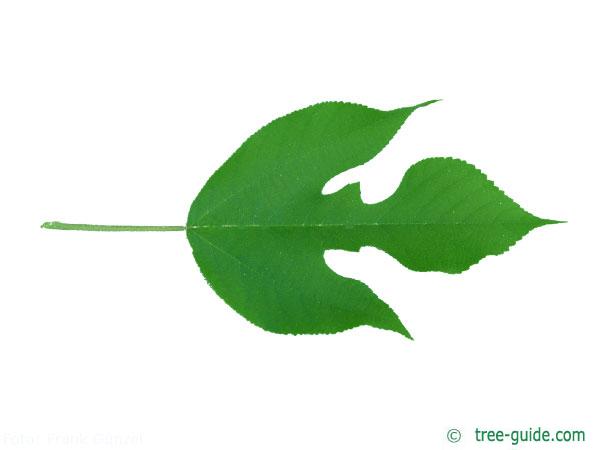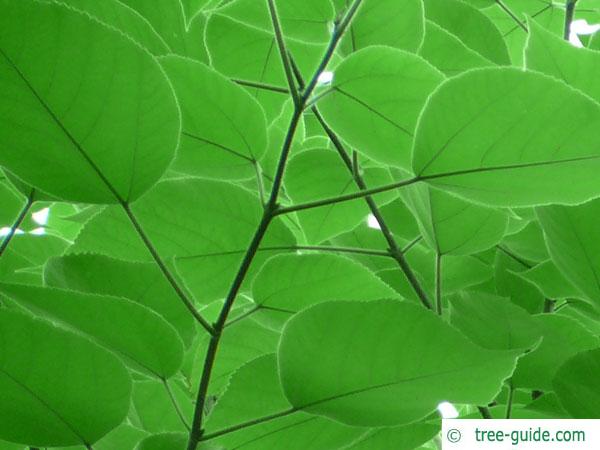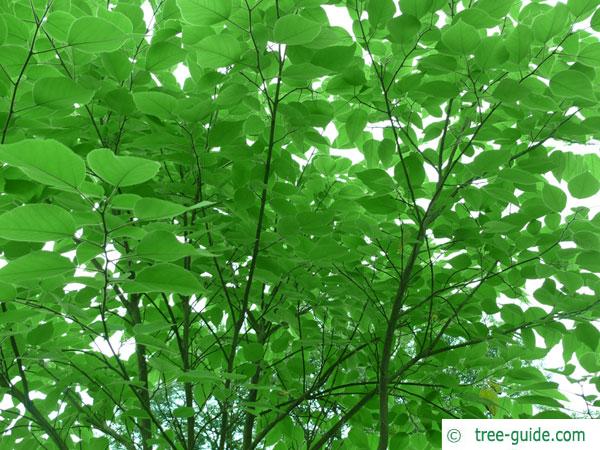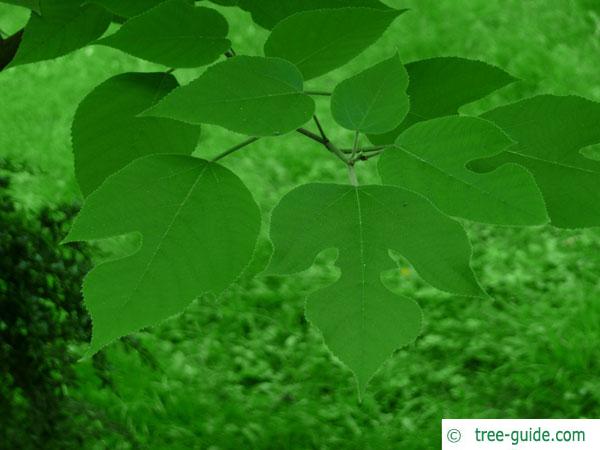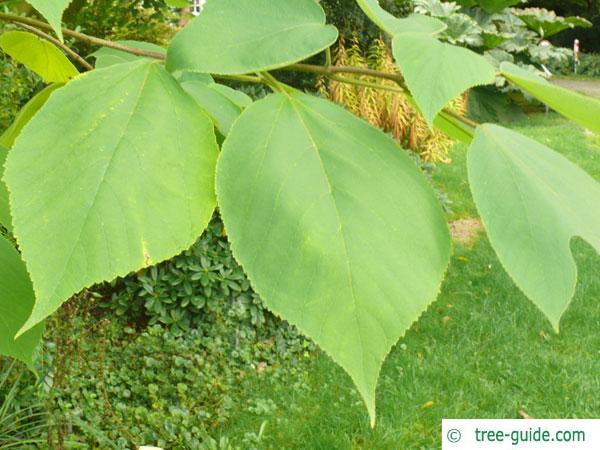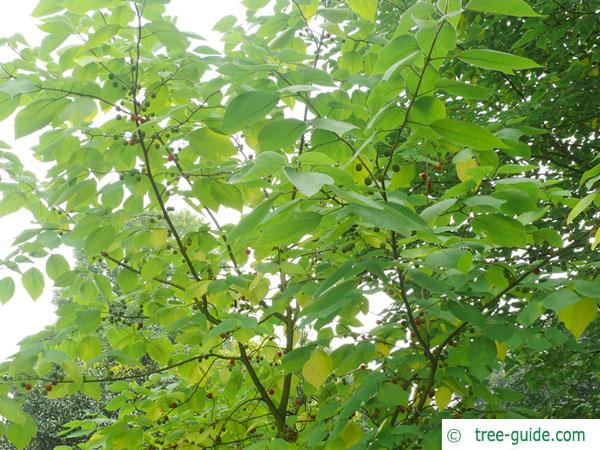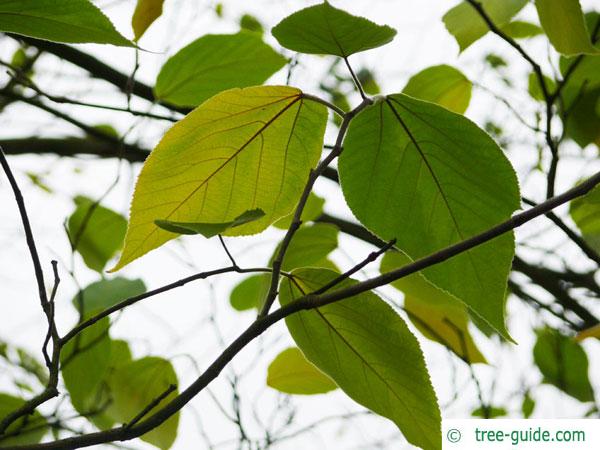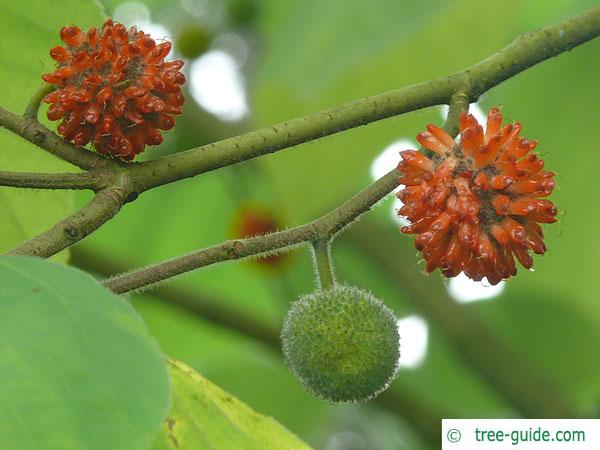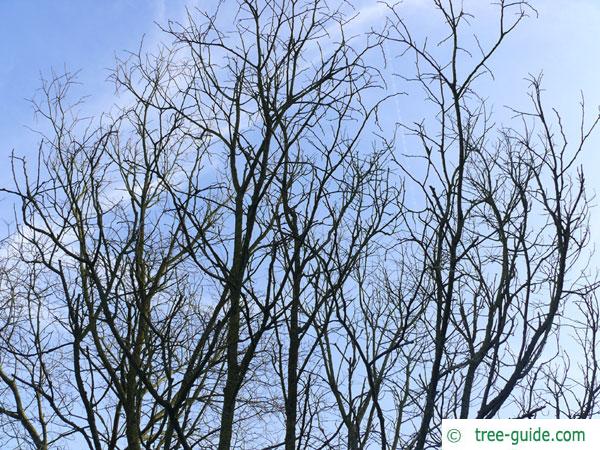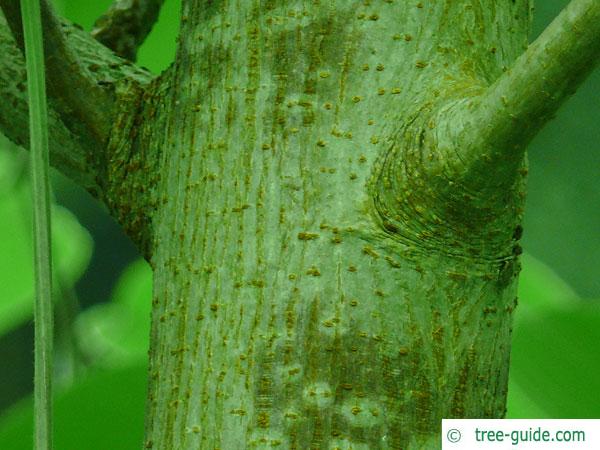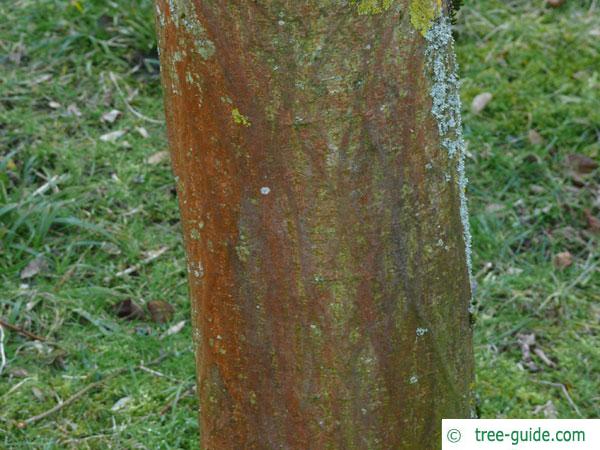Basisdaten
The paper mulberry is native to Asia and is in South Europe and the US a naturalized tree. The mulberry is difficult to determine by leaves, because these are very varied in leaf shape. The trunk with its reddish coloring and striking lenticels is a good determination help.
Tree profile
The leaf of the paper mulberry can look very different. The young leaves are often lobed, while the older ones are ovate. The petiole is very long, and the leaf has a length of up to 20 cm (7.9 in). The leaves are alternate.
The male inflorescences are yellowish ears of cornshaped, about 10 cm (3.9 in) long and hang down. The female flower is globular and red.
Stone fruits are up to 3 cm (1.2 in) in diameter.







